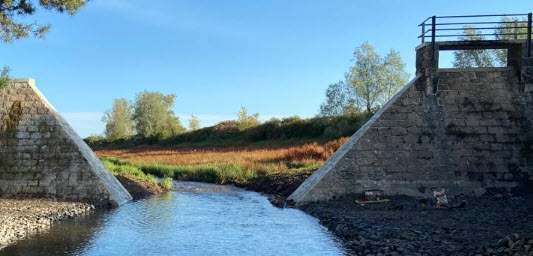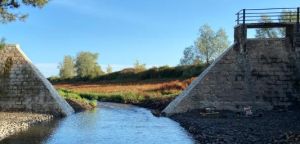Traffic Lights: Last week, the Norwegian Fisheries Minister announced the new Traffic Light assessments to be imposed on the salmon farming industry in order to protect wild salmon. I shall discuss my view of this regulation in the next issue of reLAKSation.
Drinks all round: The Scotsman newspaper considered the success of minimum unit pricing in Scotland. Before anyone start to wonder what minimum unit pricing has to do with my usual commentaries, I ask you please stick with this. The point should soon become apparent.
Minimum unit price for alcohol was made law in 2018 and the government recently agreed that the minimum price should be increased from 50p to 65p a unit. However, the law is currently operating as a trial and has to be approved before it becomes permanent or not.
The newspaper says that the debate on whether minimum pricing should be made permanent is centred on a series of about 40 studies in to whether it has had any effect. Minimum pricing was introduced to persuade everyone to drink less and to specifically address the health issues of those who drink hazardously.
The problem is that only one of the 40 plus studies suggests that minimum pricing has had any effect. This study found there was a 13.4% reduction in deaths and a 4.1% reduction in hospital admissions.
And now to the core of the matter. This one study was based on a modelled impact of minimum pricing. The Scotsman says this was not real-world data because in the real world, deaths have increased not fallen. It is on the basis of this one modelling study that the Scottish Government claims that the policy has been a success. Other studies, which presented real world data as opposed to speculation, showed no evidence one way or the other.
This story in the Scotsman is so reminiscent of the regulation being forced on the salmon farming sector. The need for this regulation is based on studies that rely on modelling rather than real world data, whilst at the same time, real world evidence that salmon farming has absolute minimal impact on wild fish is ignored. However, what makes matters worse is that the regulator, SEPA, has admitted that sea lice from salmon farming is not responsible for the declines of wild fish. Common sense would say that if salmon farming is not responsible for the declines, attention should be directed at the issues that are responsible for the decline of wild fish. Of course, no-one knows what those issues are because the focus has been for many years directed at salmon farming. Sadly, those who are pushing for this regulation are totally unwilling to listen to the evidence that all this is a complete waste of time.
You can’t even drown your sorrows any more in a good bottle of whisky because the Scottish Government’s minimum unit pricing has made it too expensive.
It seems madness that the Scottish Government is trying to supress two industries in the food and drink sector that are key to maintaining Scotland’s economy, when there is no real-world scientific evidence to support their actions.
Provisional data: My comments about the provisional salmon catch data which I wrote in the last issue of reLAKSation were written before anyone from the wild fish sector published their response.
Fisheries Management Scotland said that the publication of the provisional catch figures made alarming reading but sadly they can’t have been that alarming because their comments were not accompanied by any call for mandatory catch and release or a ban on fishing grade three rivers or more suggestions to reduce the length of the fishing season. In fact, the relationship between catch data and anglers was not discussed at all.
Instead, FMS say that the data underlines the pressing need for immediate action to prioritise the recovery of wild Atlantic salmon stocks. Even saving the 1188 wild salmon that were killed by anglers in 2023 doesn’t seem to be considered a priority.
FMS continue by saying that there is now a wild salmon strategy implementation plan and it is critical that the actions that have been identified for salmon recovery are delivered without delay. These include supporting crucial work to enhance sustainability of rivers through tree planting to mitigate climate change, improving water quality, removing barriers to fish migration, and delivering a reformed regulatory system that protects wild fish from the impacts of fish farming.
However, as I have pointed out previously, none of these actions will actually address why wild salmon are failing to return to Scottish rivers and therefor none will prevent wild salmon continuing its path to extinction from Scottish rivers.
I have written too that the wild salmon strategy is really the wild fisheries strategy and has more to do with prolonging the life of fisheries sector than the future of wild salmon.
It was not that long ago that the decision was made to ban the commercial netting of salmon at sea in order to safeguard stocks, despite bringing to an end a traditional part of the rural economy. Surely, there is no difference between netting and rod fishing and if there is a real desire to safeguard wild salmon, then the Scottish Government should introduce a temporary ban on all salmon exploitation for at least three years, to give scientists a little time to investigate why wild salmon are returning to Scotland’s rivers in ever diminishing numbers, It is only evident to look at the data from the river Dee to see that a ban is a better option because over twenty years of catch and release fishing is not working.
Sentinels: As we enter March, the new SEPA risk assessment framework has now been in place for a month and besides a FAQ on the regulatory framework, there has been very little information as to how the regulation will actually work.
In their last consultation dated May 2023, SEPA said that in order to demonstrate whether any fish farm would not pose a risk to the sea lice threshold being exceeded, they would use ‘a suitably calibrated and validated hydrodynamic model and best-practice particle (sea lice) tracking model.’ These words fill me with dread. Over the years, the scientific community have become convinced that hydrodynamic and particle tracking models represent a realistic view of what happens to sea lice in the sea. I have seen the SEPA model in operation and it does look impressive, but it is just a model and one that focuses more on sea lice as particles rather as a biological entity. My view is that the model in inherently flawed.
However, SEPA also said that if their model is unable to determine whether there is a risk, then a more refined model may be required. Most importantly, a refined model would need to be validated using a sentinel cage study.
SEPA go on to explain that the most effective way to obtain a measure of sea lice pressure is by using a sentinel cage study and they cite a paper by Pert et al. (2014). Whilst the authors say that sentinel cages may have the potential for providing an indication of sea lice pressure, they don’t really provide an explanation as to why the sentinel cages nearest the farm have the lowest lice counts whilst those furthest away, but nearest the estuary, have the highest counts.
SEPA said that well designed studies are needed if they are to provide valuable data, yet they also describe sentinel cages as holding fish for 2-3 weeks even though migrating salmon smolts are probably exposed to any salmon farms for just one or two days.
In my opinion, I suspect that SEPA will maintain that their existing model is robust and that sentinel cages will never be deployed. However, the fact that SEPA would consider using sentinel cages as part of this regulation should now be questioned, especially as the science on which it is based is ten years old and the knowledge about sea lice has moved on since then.
Some readers of reLAKSation may be aware that I am currently re-analysing the Norwegian NALO sea lice data that is used in the assessment of sea lice for the Traffic Light system. I would point out that no-one has asked me to carry out this work and no-one is paying me to do it. It is just another part of my journey of understanding the relationship between farmed and wild salmon with reference to sea lice. My interest in this data was heightened by the fact that there was a great reluctance to supply it to me. My persistence proved successful not only in obtaining the 2023 data but also that from 2022 which had not been published either.
I will write about my analysis when it is completed. It is taking time not just because of the amount of data but also because I have a full-time job. I have recently arrived at the sentinel cage data from Norway for 2023. Sentinel cages were deployed in the Hardangerfjord and Sognefjord. The Institute of Marine Research say that 18-20 cages are deployed in each fjord each containing 30 farmed salmon smolts. The fish are retrieved after 14 days.
However, what is of real interest is that IMR state in their annual assessment of the sea lice infestation 2023 that ‘the results from the sentinel cages are primarily used to compare infection pressure in time and space and not as a direct estimate of the infestation on wild fish.’ Unfortunately, IMR do not explain why they are not used for direct estimation of sea lice pressure, but I suspect that ten years after the Pert paper, they know more about the relevance of sentinel cages than they did then. My own analysis of the 2023 Norwegian sentinel cage data would lead me to agree with IMR. The sentinel cage data has little real value other than as a snapshot of a specific time. The Loch Linnhe data from 2013 that was used in the SPILLS project certainly did not provide a clear picture of infestation so I am not convinced that any new attempt to use sentinel cages in this way would be of any benefit at all. I am also of the view that the interrelations between salmon farms, sentinel cages and wild fish is not as well understood as some would believe.
Perhaps SEPA need to review how they might attempt to validate their model to make it fit for purpose.
More about the Norwegian data in a future issue of reLAKSation.
Real world: SEPA have issued a press release stating that work they commissioned has opened up 69 km of river to migratory fish. The removal of a dam near the river Dee and a weir outside Glasgow has made two sections of rivers passable for the first time in over 100 years.
SEPA say that delivering successful river restoration is crucial to the ecological and environmental well-being of Scotland, a nation famous for its rivers and lochs. The removal of these two barriers together with other river restoration projects have brought about real-world improvements to rivers that bring benefits far beyond expectation.
SEPA clearly recognise the benefits of real-world projects for wild salmon so why it is that modelled rather than real world evidence is considered sufficient when it comes to farmed salmon? Does the fact that examples such as the collapse of the famous Loch Maree sea trout fishery can now be shown to be the consequence of the real world removal of the three mile limit rather than the perceived arrival of salmon farming to Loch Ewe count for nothing? The answer is that the models show that there is an impact and that is something the salmon farming industry has been told it must accept. When it comes to salmon farming, I am not sure SEPA are living in this real world at all.


